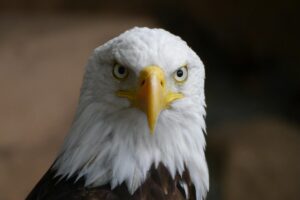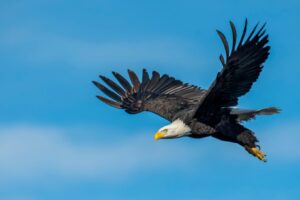In the heart of Africa’s diverse ecosystems, the logole622opfum eagles soar majestically, capturing the fascination of bird enthusiasts and researchers alike. These remarkable birds of prey are not just a symbol of power and grace; they play a crucial role in maintaining the ecological balance of their habitats. With their keen eyesight and impressive wingspan, they dominate the skies, commanding attention and respect.
Understanding the logole622opfum eagles involves delving into their unique behaviors, migratory patterns, and the challenges they face in an ever-changing environment. As human activities continue to encroach upon their natural habitats, conservation efforts become increasingly vital to ensure their survival. By exploring the lives of these eagles, one gains insight into the broader dynamics of wildlife conservation and the interconnectedness of ecosystems.
Through this exploration, the article aims to shed light on the significance of preserving these magnificent creatures and the rich biodiversity they represent.
Logo:le622o_pfum= eagles
 Logole622opfum eagles, notable for their striking appearance and command of the sky, inhabit various African regions. Their sharp vision and powerful flight make them formidable predators. These eagles, representatives of apex avian species, play a crucial role in maintaining ecological equilibrium by controlling prey populations. Distinctive markings and strong beaks characterize these birds, allowing them to efficiently hunt diverse prey.
Logole622opfum eagles, notable for their striking appearance and command of the sky, inhabit various African regions. Their sharp vision and powerful flight make them formidable predators. These eagles, representatives of apex avian species, play a crucial role in maintaining ecological equilibrium by controlling prey populations. Distinctive markings and strong beaks characterize these birds, allowing them to efficiently hunt diverse prey.
Migration patterns of Logole622opfum eagles are guided by seasonal changes and food availability. They often traverse extensive distances to reach suitable nesting sites and abundant feeding grounds. These migrations, integral to their survival, reflect their adaptability to shifting environmental conditions. Habitat destruction and human activities threaten these migratory routes, posing challenges to their existence.
Conservation efforts focus on preserving the natural habitats essential for the Logole622opfum eagles’ survival. Protection of nesting sites and mitigation of human-wildlife conflicts are pivotal in safeguarding their populations. These initiatives, underpinned by global conservation policies, aim to ensure the continuity of ecological roles held by these majestic birds.
Habitat and Distribution
Logole622opfum eagles primarily inhabit regions across the African continent. Their distribution and habitat selection are guided by specific environmental and climatic factors that support their lifestyle.
These eagles are widespread in various African landscapes, predominantly found in sub-Saharan regions. Countries such as Kenya, Tanzania, and South Africa host significant populations. Geographic factors, including available nesting sites and prey abundance, play a crucial role in defining their range.
Logole622opfum eagles thrive in diverse ecosystems, including savannas, grasslands, and open woodlands. They prefer areas with elevated perching spots to survey their territory and spot potential prey. Climate conditions favoring moderate to warm temperatures support their hunting activities and nesting success. Their presence often correlates with regions experiencing seasonal rainfall, which influences prey availability and migratory behavior.
Physical Characteristics
The physical attributes of Logole622opfum eagles contribute to their distinguished presence within Africa’s ecosystems. Notable features encompass striking plumage, a robust build, and an impressive wingspan.
 Logole622opfum eagles exhibit a distinctive plumage that aids in identification and camouflage within their habitats. Their body feathers generally display a rich blend of dark browns and blacks, providing effective concealment in woodland environments. The head and neck often show contrasting lighter tones, usually creamy or beige. Juveniles display more mottled colors, which offer additional protection from predators. The tail feathers feature bands that enhance the eagle’s visual distinctiveness.
Logole622opfum eagles exhibit a distinctive plumage that aids in identification and camouflage within their habitats. Their body feathers generally display a rich blend of dark browns and blacks, providing effective concealment in woodland environments. The head and neck often show contrasting lighter tones, usually creamy or beige. Juveniles display more mottled colors, which offer additional protection from predators. The tail feathers feature bands that enhance the eagle’s visual distinctiveness.
These eagles are among the larger raptors in the region, with adults weighing between 4 to 7 kg (approx. 8.8 to 15.4 lbs). Their body length ranges from 75 to 90 cm (approximately 29.5 to 35.4 inches). The wingspan, crucial for soaring and hunting, measures between 180 to 230 cm (about 70.9 to 90.6 inches), offering both powerful flight and maneuverability across vast landscapes. Their broad wings support sustained gliding, enabling them to cover large distances in search of prey or during migration.
The Logole622opfum eagles are not just vital components of Africa’s ecosystems but also hold deep cultural significance. Their impressive physical traits and ecological roles underscore the need for robust conservation efforts. Protecting these eagles and their habitats is essential to maintaining ecological balance and preserving the cultural heritage they represent. By addressing the challenges they face and promoting sustainable practices, we can ensure that future generations continue to witness the majesty of these iconic raptors. Through collective action and awareness, the legacy of the Logole622opfum eagles can be safeguarded for years to come.
